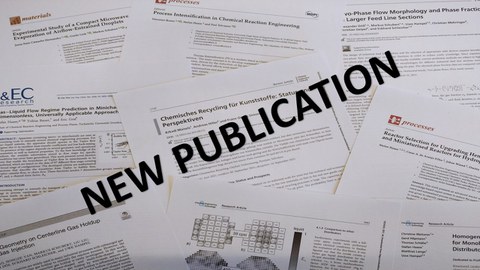26.07.2023
Mass Transfer Performance and Hydrodynamics of a Bubble Column Reactor at Offshore Floating Conditions
Hydrodynamics and mass transfer characteristics are analyzed in a bubble column subjected to simulated ship motions using a hexapod robot with six-degree-of-freedom motions. Wire-mesh sensors have been used for collecting local gas holdup and flow patterns under nonreactive conditions. Additionally, the electrical conductivity of the liquid phase during CO2 uptake was extracted to determine hydroxide ion consumption rates as an indicator of mass transfer. The two-phase flow patterns in the bubble column operating under offshore conditions deviate significantly from the stationary ones due to the buoyancy-driven lateral migration of bubbles. The consumption rates of hydroxide ions during the chemical absorption of CO2 revealed that the amplitude of oscillations imposed on the bubble column is the dominant factor for the mass transfer in moving columns. Contrarily, the effect of the oscillation frequency is negligible, which is attributed to bubble coalescence and bubble flow maldistribution in the bubble column subjected to rotational oscillations. Bubble-free zones are formed in the liquid phase because of the buoyancy effects in the column tilted from the vertical axis, while the frequency of the oscillations does not add any additional effects to the bubble kinematics. The latter is attributed to the low shear rates maintained over the range of frequencies simulating marine swells.

